Attention journalists – free online workshop on digital safety
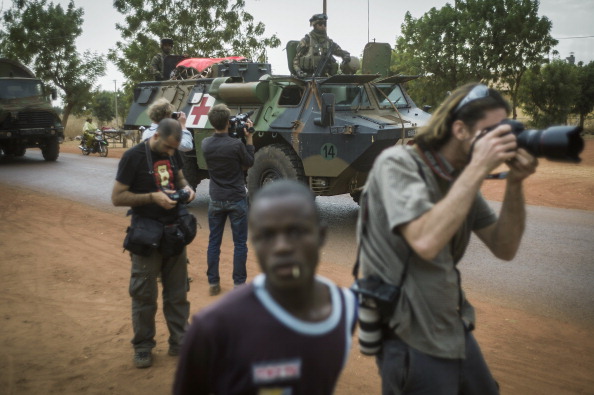
Photo – FRED DUFOUR/AFP/Getty Images
Are you are journalist? A blogger? A photographer? A media activist?
Sign up for the open online “Digital Safety for Journalists” workshop being offered by DW Akademie in the first week of December, 2013.
The workshop, which is being held in conjunction with Reporters Without Borders, will give you a better understanding of how to protect your communications and your data.
All over the world, media professionals are increasingly using digital devices such as cameras, recorders, mobile phones and computers to do their reporting. These might make our lives easier, but they also mean we are increasingly being subject to digital surveillance and hacking attacks. This means digital security has become an imperative.
![]() read more
read more
Get smart about getting hacked!

Watch out! Someone could be spying on you
When hackers broke into AP’s Twitter account earlier in 2013, their fake tweet about Barack Obama being injured in an explosion at the White House caused the US stock market to plunge. Just before the Twitter account was hacked, AP staffers had received an email asking them to click on a link that supposedly went to a Washington Post article.
Although it looked legitimate, the email was actually a phishing attack (view the email here). The fraudulent link redirected the recipients to a bogus site where they were asked for their login credentials. At least one person fell for the phishing email and gave the hackers, the Syrian Electronic Army, the password they needed to tweet in AP’s name.

In this case, the incident proved more embarrassing than damaging – the tweet was corrected immediately and the stock market recovered within minutes.
But falling for a phishing attack can have much more serious repercussions.
![]() read more
read more
Myanmar journalist cautiously optimistic about press freedom
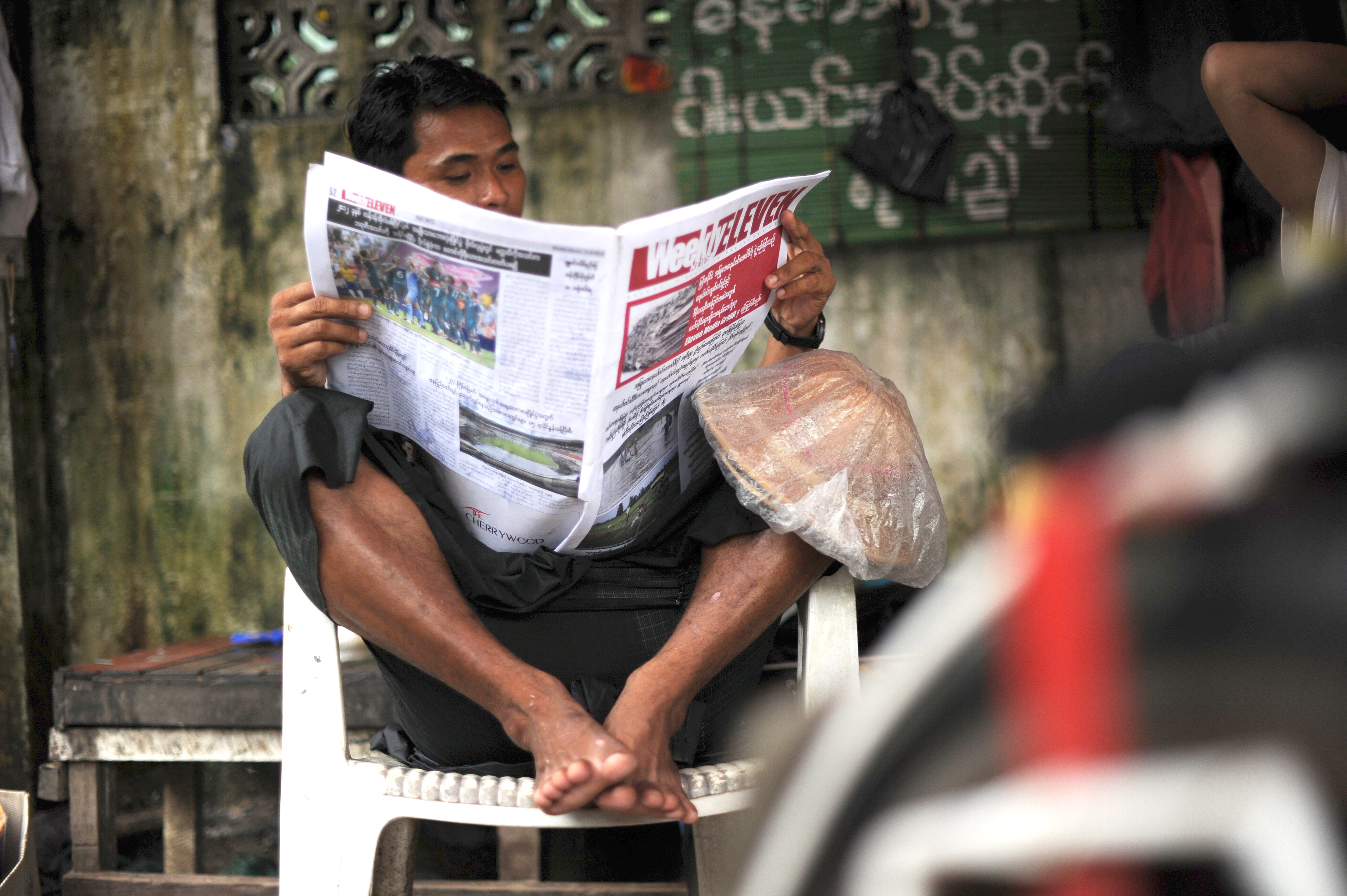
© Soe Than WIN/AFP/Getty Images
The media landscape in Myanmar is rapidly opening up. Last year, the government ended the direct censorship of the country’s media after almost fifty years of some of the most draconian press laws in the world. Privately owned newspapers are flourishing and newspaper stands now feature on many street corners. Reporters Without Borders even talked of “historic progress” in its last report on the country’s media health.
One of the few newspapers which was allowed to be published during Myanmar’s military rule was The Myanmar Times. The paper’s managing director, Zaw Win Than, has seen many changes since he first started working there as a journalist in 2006. DW Akademie’s Nadine Wojcik asked him about the shifts in the media landscape since the military junta ended in 2011.
![]() read more
read more
Tools and Apps for Journalists: Sonic Pics

Audio slideshows can be an engaging part of any multimedia package. They’ve got the strength and appeal of photography while the narration adds the power of the human voice, giving context and filling in details that the images might not otherwise provide.
One of the problems in the past was finding good tools to create them. For years, SoundSlides has been the standard but it costs between $40 and $70 and the learning curve, while not Himalayan steep, is a little uphill at first.
Now there are several tools out there that allow you to put together basic audio slideshows in a snap and on the fly, and they won’t break the bank. Sonic Pics for iPhones or iPads is a low-cost one that’s impressive. It’s easy to use, has a simple, clean interface and pretty much does what it promises.
![]() read more
read more
Don’t panic and calm down during interviews!
It happens to even experienced journalists – faced with a famous person or someone we admire, we get so nervous that we forget to do our job properly. In the latest post of our series on difficult and challenging interviews, journalists Marina Soboleva and Armine Agaronyan reflect on two situations where talking to prominent people left them tongue-tied. They offer some advice on how not to fall into the same trap.
![]() read more
read more
Adapting the HuffPost to a context of political transition
 After the political uprising in Tunisia in January 2011, the political and media landscape changed dramatically. New websites, radio and TV channels sprung up. And political discussions, once taboo, invaded every corner of daily life. In such a dynamic context of transition, how can yet another website exist and find an audience?
After the political uprising in Tunisia in January 2011, the political and media landscape changed dramatically. New websites, radio and TV channels sprung up. And political discussions, once taboo, invaded every corner of daily life. In such a dynamic context of transition, how can yet another website exist and find an audience?
The Huffington Post, founded as a news agregator and blog platform in the US in 2005, gave it a try and entered the market. Launched in June 2013, its Maghreb edition has quickly gained a reputation among users, not only for doing things differently compared to other Huffington Post editions, but for also being different to other online media in North Africa. Covering mainly Tunisia at the moment, the young team is planning to expand its coverage to Algeria and Morocco soon.
What is probably most striking when you look at the website is the “most read” section. Rather than lifestyle, food and fashion in other HuffPost editions, in the Maghreb version you’ll find politics, politics, and more politics. “We’re different from other Huffington Posts because the context is different,” explains editor-in-chief Houeida Anouar. “Every edition is free to take from the HuffPost DNA what it likes and to adapt it to its needs.”
![]() read more
read more
Data journalism’s social future

Twelve renowned journalists from Latin America and Germany are coming together to explore the future of data journalism. Under the motto “Public Data Goes Social”, the journalists and open data experts will meet for three days in Buenos Aires to discuss the most burning issues in the booming field of data journalism.
The talks are part of a Media Dialogue organized by DW Akademie and supported by Germany’s Federal Foreign Office. You can follow the event, which runs from 13-15 November, on Twitter via @dw akademie and the hashtag #mdba.
There is a thriving community of data journalists in Germany and Latin America and the two regions are building a reputation for innovations in the field. Read more for a short introduction to the Media Dialogue participants.
![]() read more
read more
Inside the Za’atari refugee camp in Jordan
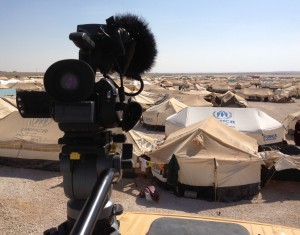 It may be considered a “temporary” home, but the sprawling Za’atari camp for Syrian refugees is now Jordan’s fourth largest city. And it’s a complex city. Not only does it provide a safe haven for people who have fled the conflict in Syria, but it requires all of the resources, services and amenities to support a large population – from water and electricity to hospitals and schools to supermarkets and cafes.
It may be considered a “temporary” home, but the sprawling Za’atari camp for Syrian refugees is now Jordan’s fourth largest city. And it’s a complex city. Not only does it provide a safe haven for people who have fled the conflict in Syria, but it requires all of the resources, services and amenities to support a large population – from water and electricity to hospitals and schools to supermarkets and cafes.
When I visited the Za’atari camp just over a year ago, there were only 30,000 refugees. That was staggering at the time. Now it is home to approximately 120,000 people.
As the conflict in Syria continues, two new media projects are documenting life inside the camp.
![]() read more
read more
NYT scrolls down the South China Sea
The New York Times “Snow Fall” multimedia feature is one that onMedia has mentioned in dispatches several times and most recently in our interview with Dr David Campbell discussing his research into visual storytelling for World Press Photo.
“What Snow Fall indicates, is that in 2013, major media organisations are catching up to what the web does and are starting to present their information in ways that are much more friendly to digital spaces, and therefore more accessible from the huge range of devices you can get online with.”
The NYT has since employed the Snow Fall scrolling style of design in a number of features and the latest one produced for the New York Times Magazine is worth a look.
![]() read more
read more
In dialogue with Mongolian media
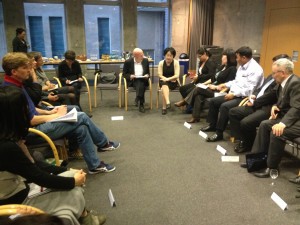 A list of forbidden words; newspapers influenced by politicians; and in the capital Ulan Bator, Mongolian journalists refrain from criticizing their colleagues because all journalists know each other.
A list of forbidden words; newspapers influenced by politicians; and in the capital Ulan Bator, Mongolian journalists refrain from criticizing their colleagues because all journalists know each other.
At a recent DW Akademie Media Dialogue in Berlin, a group of visiting journalists, editors and media experts from Mongolia gave an insight into media development in their country.
German journalists attending were keen to find out about press freedom in Mongolia; who exactly owns private media; and, what progress is being made towards press industry self regulation.
It was also another opportunity for the visiting Mongolian journalists to compare journalistic practices and media regulation between Germany and Mongolia.
Following the end of the Soviet era, Mongolia introduced a number of laws to make reforms in public broadcasting, freedom of information and to prevent media censorship.
In 2010, Reporters without Borders ranked Mongolia in its Press Freedom Index at 76. This year Mongolia was ranked 98.
One topic that generated a lot of discussion was the so-called “list of forbidden words”. Journalists explained how Mongolia’s Communications Regulatory Commission (CRC) is under strong political pressure to make media organizations use software to filter or hide “forbidden words” in online reader comments that are critical of government or insulting.
To explore how Mongolia’s media is developing, onMedia spoke with Munkhmandakh Myagmar, Executive Director of the Mongolian Press Institute; and, Tserenjav Demberel, Executive Director of Transparency Foundation Mongolia, and a blogger on media issues.
![]() read more
read more




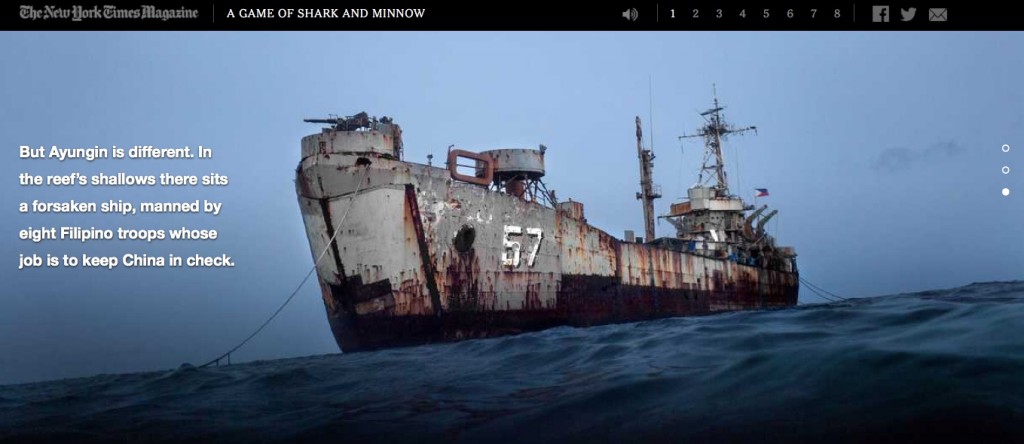




Feedback